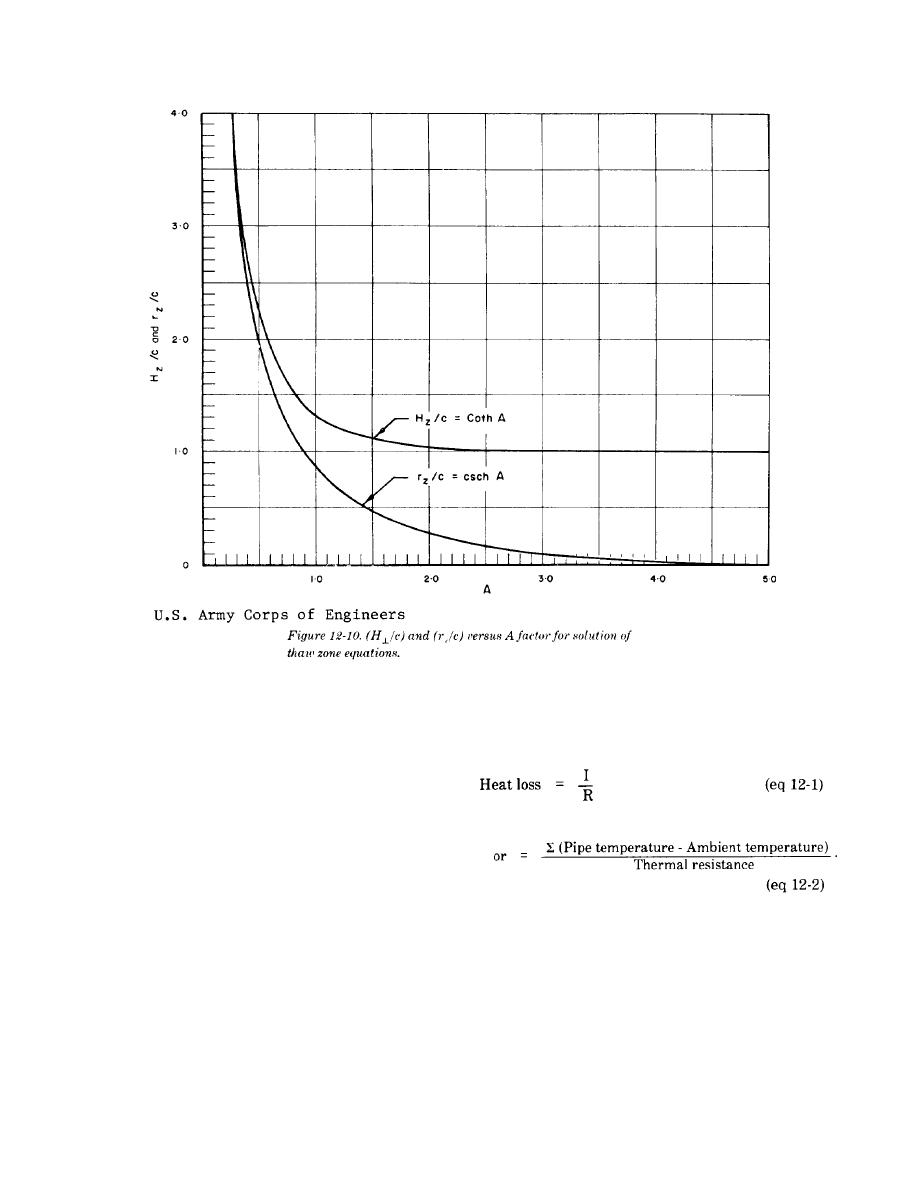
TM 5-852-5/AFR 88-19, Volume 5
(5) Steady-state thermal influences in iso-
period can be calculated from the heating index
during that period (see paragraph 12.9h):
tropic, homogenous soils can be summed and geo-
metric modifications and approximations can be
made to the basic steady-state equations. For
example, a layered soil can be represented by an
"effective" soil thickness with the same total thermal
resistance as the layered soil. When pipes are buried
below the area influenced by short-term air
temperature fluctuations, the ground temperatures
around the pipeline resemble a slowly changing
series of steady-state conditions. The heat loss from
where
deeply buried pipes can be calculated from steady-
I = heating index EF (time period).
state equations for a cylinder of material around a
R = thermal resistance hrftEF/BTU.
pipe if the fluid temperature and the soil temperature
at a known distance from the pipe are measured,
b. Depth of freezing or thawing. The depth of
and the soil and insulation thermal conductivities are
known. Heat loss from deep pipes can also be
freezing or thawing of soil and the ice thickness on
conveniently estimated by replacing the ground
water bodies are best obtained by field
surface temperature in the steady-state equations
measurements, but they can be estimated using one
with the undisturbed ground temperature at the pipe
of the many analytical solutions available. Because
depth. Heat loss from a buried pipe over a time
of the assumptions necessary in these analytical
12-13



 Previous Page
Previous Page
